Proper after-care is vital to maintain vibrant tie-dye colors and ensure longevity. This guide provides essential tips for washing, drying, and storing your tie-dye creations effectively.
1.1 Importance of Proper After Care
Proper after-care is crucial to preserve the vibrant colors and integrity of your tie-dye garment. Immediate steps like letting the dye set and rinsing excess dye prevent color bleeding and fading. Washing separately and using the right detergent ensures colors stay vivid. Storing tie-dye in cool, dark places avoids sun damage. Neglecting these steps can lead to faded designs and damaged fabric. By following care instructions, you protect your tie-dye investment and enjoy its unique beauty longer. Proper after-care transforms a temporary craft into a lasting, wearable masterpiece.
1.2 Brief Overview of the Process
After creating your tie-dye masterpiece, proper after-care begins with letting the dye set, typically by leaving the fabric tied overnight. This allows the colors to fully bond with the material. Next, rinse the garment under cold water to remove excess dye until the water runs clear. Remove rubber bands carefully to avoid damaging the fabric. The first wash should be done separately in hot water to eliminate any remaining dye residue. Subsequent washes can be with similar colors to prevent bleeding. Drying is best done naturally, away from direct sunlight, to maintain color vibrancy. Regular care involves using mild detergents and storing the garment in a cool, dark place. Following these steps ensures your tie-dye remains colorful and intact for years.
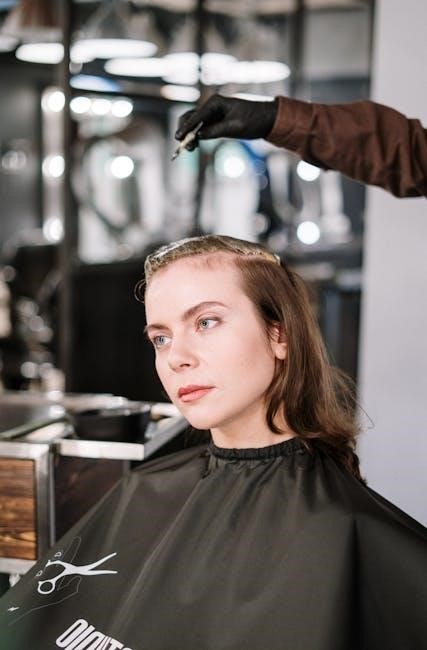
Immediate Post-Dye Care
After dyeing, let the fabric sit to allow colors to set. Rinse gently, remove rubber bands, and ensure no excess dye remains before further care.
2.1 Letting the Dye Set
Allowing the dye to set is crucial for vibrant, long-lasting colors. After applying the dye, let the fabric sit undisturbed for 6–8 hours or overnight. This time allows the dye to fully bind with the fabric. Avoid moving or rinsing the fabric during this period, as it can disrupt the color fixation process. The longer you wait, the deeper the colors will be. For best results, keep the fabric in a warm, dry place away from direct sunlight. This step ensures the tie-dye design stays bold and prevents fading. Patience here is key to achieving professional-looking results. Never skip this step, as it directly impacts the final outcome.
2.2 Rinsing Out Excess Dye
Rinsing excess dye is essential to prevent color bleeding and ensure vibrant results. After letting the dye set, gently rinse the fabric under cold running water while it’s still folded or tied. Do not remove the rubber bands yet, as this helps maintain the design. Rinse thoroughly until the water runs clear, removing loose dye particles. Be careful not to scrub or agitate the fabric, as this can damage the fibers or disrupt the pattern. This step prevents excess dye from affecting the final color intensity. For delicate fabrics, consider rinsing in a sink to avoid machine agitation. Gentle handling here preserves the tie-dye design and sets it up for successful washing.
2.3 Removing Rubber Bands
Once the dye has set and excess dye has been rinsed out, it’s time to remove the rubber bands. Carefully cut or untie the bands to avoid stretching or distorting the fabric. If the bands are tight, cutting them with scissors is the safest option. After removing the bands, gently unfold the fabric to reveal the tie-dye pattern. Inspect for any remaining dye residue or areas where the bands may have caused creasing. Lightly rinse again if necessary. Avoid yanking the bands off, as this could misshape the fabric or disrupt the design. Proper removal ensures the pattern remains intact and even. This step finalizes the tie-dye process before washing.
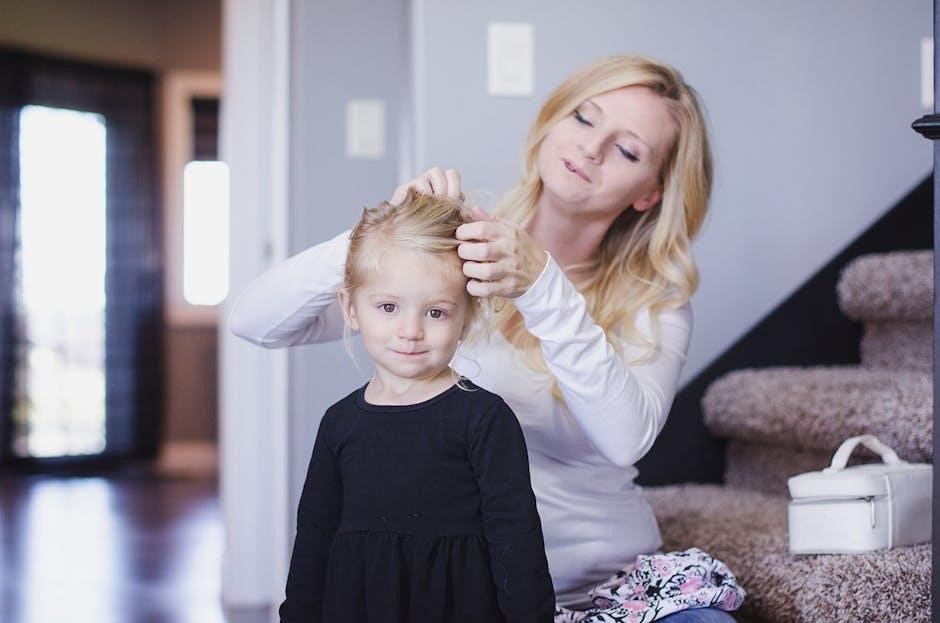
Washing Instructions
Wash tie-dye items separately or with similar colors to prevent dye bleeding. Use cold water and a mild detergent to preserve vibrant colors and fabric integrity.
3.1 First Wash: Separate Washing
Always wash your tie-dye item separately during the first wash to prevent excess dye from bleeding onto other clothes. Use cold water to minimize color fading and runoff. Gently agitate the fabric to avoid harsh friction, which can damage the material or disrupt the dye pattern. A mild detergent is recommended to maintain color vibrancy and protect the fabric. Avoid using fabric softeners or bleach, as they can weaken the dye bonds and harm the fabric. For best results, wash the item inside out to shield the dyed side from excessive abrasion. Do not soak the garment for extended periods, as this may cause colors to bleed or fade unevenly. After the first wash, colors will stabilize, making it safer to wash with similar hues in the future.
3.2 Subsequent Washes: Washing with Similar Colors
After the first wash, tie-dye items can be washed with similar colors to minimize dye transfer. Sort clothes by color intensity to prevent fainter shades from being affected by darker dyes. Use cold water for all subsequent washes, as hot water can cause colors to bleed or fade. A mild detergent is still recommended to preserve the vibrancy of the dyes. Avoid overloading the washing machine, as excessive friction can damage the fabric and disrupt the tie-dye pattern. For extra protection, consider turning the garment inside out before washing to shield the dyed side from abrasion. Regular washing in this manner will help maintain the integrity and longevity of your tie-dye design while keeping it looking fresh and vibrant over time.
3.3 Using the Right Detergent
Choosing the right detergent is crucial for maintaining the vibrancy and longevity of your tie-dye design. Opt for a mild, phosphate-free detergent that is gentle on colors and fabrics. Avoid using harsh chemicals, bleach, or optical brighteners, as these can strip the dye from the fabric and cause fading. For best results, use a detergent specifically designed for washing colored or hand-dyed fabrics, as these are formulated to preserve colors. Cold water is always recommended, and using a gentle cycle will further protect the dye. Plant-based or eco-friendly detergents are excellent options, as they are less likely to contain harmful additives. By selecting the right detergent, you can ensure your tie-dye remains vibrant and intact for years to come.

Drying Your Tie-Dye
Air drying is recommended for tie-dye garments to preserve colors and elasticity. Avoid machine drying, as heat can cause fading or shrinkage. Lay items flat or hang them in a shaded area, away from direct sunlight, to maintain vibrancy and prevent uneven drying. Reshaping the fabric while damp can help restore its original form. Always allow the garment to air dry completely before storing or wearing. This method ensures the tie-dye design remains intact and the fabric stays soft and durable over time.
4.1 Air Drying vs. Machine Drying
Air drying is the preferred method for tie-dye garments, as it prevents shrinkage and preserves vibrant colors. Machine drying, especially on high heat, can cause fabrics to shrink and dyes to fade. Air drying also helps maintain the elasticity and softness of the material. To air dry, lay the garment flat on a clean surface or hang it on a sturdy hanger in a well-ventilated area. Avoid direct sunlight, as it can bleach the colors over time. If machine drying is necessary, use a low heat setting and remove the garment as soon as the cycle ends to prevent wrinkles. Always reshape the item while it’s damp to restore its original form. This approach ensures long-lasting color retention and fabric integrity.
4.2 Avoiding Direct Sunlight
Direct sunlight can cause tie-dye colors to fade and lose their vibrancy over time. UV rays break down the dye molecules, leading to a dull appearance. To preserve the colors, avoid drying or storing tie-dye garments in direct sunlight. Instead, opt for shaded areas or indoor drying. If outdoor drying is unavoidable, use a clothesline under a tree or canopy. For storage, keep the garment in a cool, dark place or use UV-protective bags. Sunlight exposure is particularly harmful for natural dyes, which are more prone to fading. By shielding your tie-dye from direct sun, you can maintain its bold, colorful appearance and extend its lifespan. This simple precaution ensures your unique design remains vibrant for years to come.
Storing Your Tie-Dye
Store tie-dye in a clean, dry environment to maintain its quality. Fold or hang items in breathable materials, avoiding direct sunlight and moisture to preserve colors and fabric integrity.
5.1 Storage Locations
When storing tie-dye items, choose a clean, dry location with stable temperatures to prevent fading or fabric damage. Avoid basements or attics prone to moisture or extreme temperature fluctuations. Opt for a closet or drawer with good airflow to maintain fabric health. Use breathable storage bags to protect from dust and mildew. Avoid direct sunlight exposure, as UV rays can cause colors to fade over time. Keep tie-dye items away from damp areas to prevent mold growth. Ensure the storage space is free from pests and odors to preserve the integrity of the fabric and dyes. Storing tie-dye separately from other clothes can also help prevent accidental dye transfer.
5.2 Folding vs. Hanging
Folding and hanging are two common methods for storing tie-dye items, each with its own benefits. Folding is ideal for items like t-shirts or scarves, as it prevents stretching and creases. Use a soft, clean surface to fold items gently, avoiding sharp creases that might damage the fabric. Hanging is better for garments like dresses or hoodies, as it maintains their shape and prevents wrinkles. Use padded hangers to protect the fabric and avoid stretching the neckline. For both methods, ensure the item is completely dry and free of excess dye residue. Store in a breathable material like cotton bags to prevent moisture buildup. Regularly inspect stored items to ensure they remain in good condition.
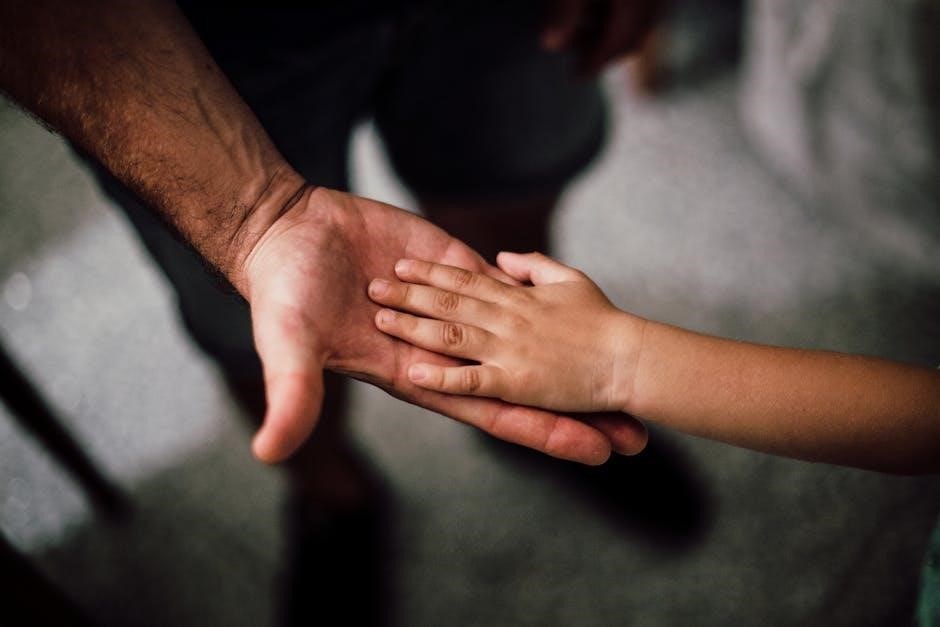
Maintaining Vibrant Colors
Regular care ensures tie-dye colors stay bright. Use cold water, mild detergents, and avoid harsh chemicals. Soaking in vinegar helps lock colors, while direct sunlight can fade them.
6.1 Using Vinegar Soaks
Vinegar soaks are a natural way to maintain vibrant tie-dye colors. Mix 1 cup of white vinegar with 4 cups of cold water and soak the garment for 10-15 minutes. This helps lock the dye, preventing fading. Gently agitate the water to ensure even distribution. After soaking, rinse thoroughly with cold water to remove excess vinegar. This method is especially effective for natural dyes and can be repeated every few washes to preserve color intensity. Avoid using hot water, as it can strip the dye. Vinegar soaks are gentle on fabrics and eco-friendly, making them a great alternative to harsh chemical treatments. Regular use ensures your tie-dye stays bright and vibrant over time.
6.2 Avoiding Harsh Chemicals
Avoiding harsh chemicals is crucial for preserving tie-dye colors and fabric integrity. Bleach, strong detergents, and fabric softeners can strip dyes, leading to fading and unevenness. Opt for mild, color-safe detergents or those designed for hand-washing delicates. Steer clear of optical brighteners, as they can alter colors. When spot-treating stains, use gentle stain removers instead of harsh chemicals. Avoid soaking tie-dye in hot water with heavy-duty cleaners, as this can weaken fibers and damage the dye. Always check the care label on your detergent to ensure it’s suitable for vibrant or hand-dyed fabrics. By avoiding harsh chemicals, you protect the fabric and maintain the color vibrancy of your tie-dye creations.
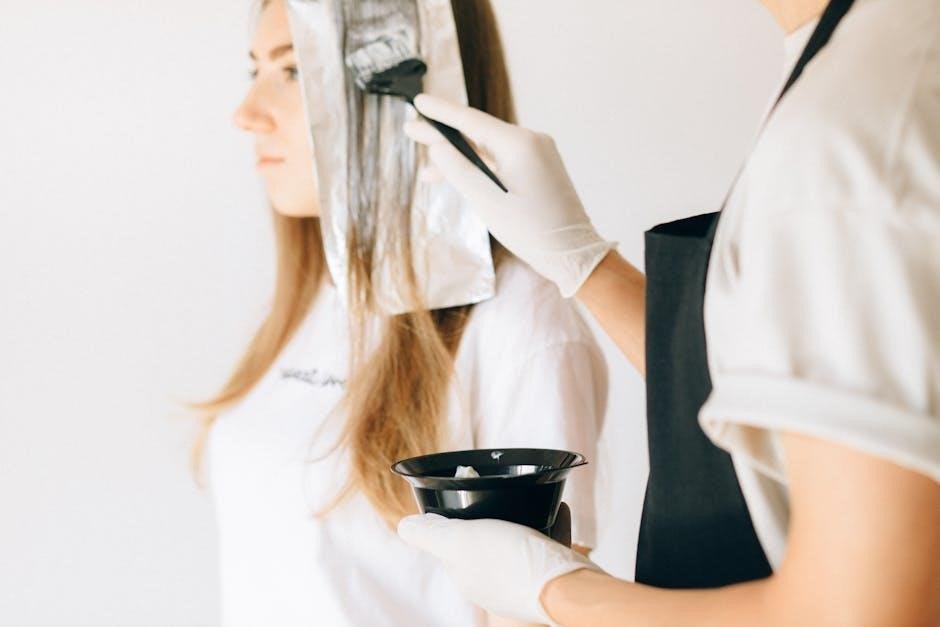
Troubleshooting Common Issues
Tie-dye fabrics may face issues like uneven fading or dye bleeding. Address these by using color-protecting rinses or mild detergents. Act quickly to prevent stains from setting.
7.1 Fixing Faded Colors
Faded colors on tie-dye fabrics can be revitalized by using vinegar soaks or color-refreshing detergents. Soak the garment in a mixture of cold water and vinegar for 30 minutes to help restore vibrancy. For more severe fading, consider re-dyeing the affected areas using fabric dyes. Always use cold water and gentle detergents to prevent further color loss. Avoid harsh chemicals and hot water, as these can exacerbate fading. Regular use of vinegar during washing can also help maintain color intensity over time. Proper care and attention to washing techniques are essential to preserving the vivid hues of your tie-dye creations.
7.2 Removing Dye Stains
Act quickly to remove dye stains, as the sooner you treat them, the better. Blot the stained area with a clean cloth to absorb excess dye. Avoid rubbing, as it can spread the stain. Rinse the fabric under cold running water to flush out loose dye. Apply a mixture of mild laundry detergent and white vinegar directly to the stain, gently scrubbing with a soft-bristled brush. For stubborn stains, soak the garment in cold water with a color-safe bleach alternative. Rinse thoroughly and check if the stain is gone before drying. Repeat if necessary. Avoid using harsh chemicals or hot water, as they can damage the fabric or set the stain permanently. For silk or rayon, consider using enzymatic cleaners specifically designed for delicate fabrics. Always test a small area first to ensure no further damage occurs.
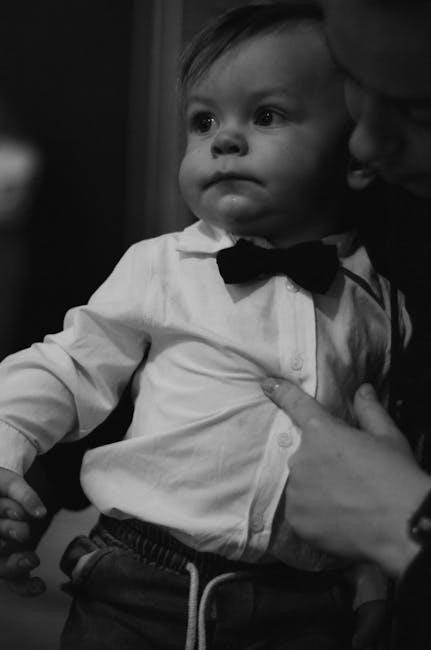
Special Care for Different Fabrics
Different fabrics require tailored care to preserve tie-dye designs. Cotton and linen are durable, while silk and rayon need gentler handling to avoid damage.
8.1 Cotton and Linen
Cotton and linen fabrics are popular for tie-dye due to their durability and absorbency. To maintain vibrant colors, wash them in cold water using a mild detergent. Avoid bleach or harsh chemicals, as they can weaken fibers and fade dyes. Gently agitate the fabric during washing to prevent friction, which can cause colors to bleed. After washing, air-dry the fabric instead of machine-drying, as heat can shrink the material and dull the colors. For stains, spot-treat with cold water and a gentle cleaner before washing. Regular care ensures the tie-dye design remains bold and the fabric stays soft. Proper maintenance extends the life of your cotton or linen tie-dye items.
8.2 Silk and Rayon
Silk and rayon fabrics require special care to preserve their tie-dye colors and texture. Wash these fabrics gently by hand using cold water and a mild detergent specifically designed for delicate materials; Avoid machine washing, as the agitation can damage the fibers and cause colors to bleed. Gently swish the fabric in the water, then rinse thoroughly. Do not wring or twist the fabric, as this can stretch or weaken the material. Air-dry by laying the fabric flat or hanging it in the shade. For stains, gently blot with a clean cloth and a small amount of cold water. Regular, gentle care ensures silk and rayon tie-dye items remain vibrant and soft for years.
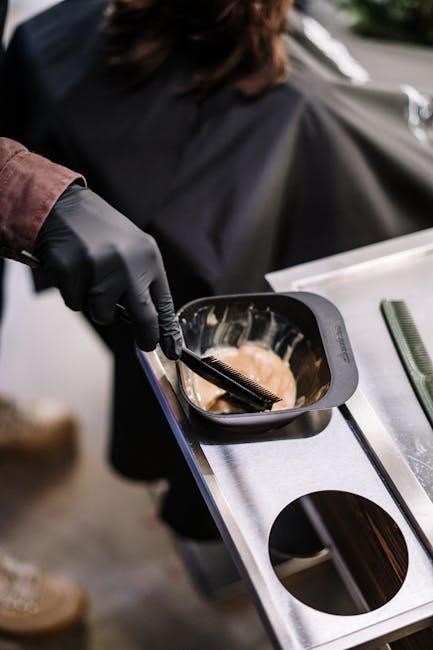
Long-Term Maintenance
Regularly caring for your tie-dye ensures longevity. Store items in a cool, dry place and avoid harsh detergents. Proper maintenance preserves colors and fabric integrity over time.
9.1 Regular Washing Tips
For long-term maintenance, wash your tie-dye items regularly to prevent dirt buildup. Always turn garments inside out before washing to protect the design. Use cold water and a mild detergent to avoid fading; Avoid using fabric softeners, as they can damage the fabric and dull colors. Opt for a gentle wash cycle to minimize friction. Do not soak tie-dye items for extended periods, as this can cause color bleeding. After washing, remove promptly from the washing machine to prevent creasing. Regular washing helps maintain the fabric’s softness and the vibrancy of the colors. Consistency is key to preserving the integrity of your tie-dye creations over time.
9.2 Seasonal Storage Tips
When storing tie-dye items seasonally, opt for a cool, dry place to preserve colors and fabric integrity. Avoid direct sunlight, as it can cause fading. Use breathable storage containers, such as cotton bags or boxes, to maintain airflow. For folded items, place tissue paper between layers to prevent creasing. Hanging is also an option, but avoid using wire hangers, as they can stretch the fabric. Clean the item before storage to prevent stains from setting in. Avoid storing in plastic bags, as moisture can build up and damage the fabric. For long-term storage, consider folding items and placing them in a drawer or closet. Check stored items periodically to ensure they remain in good condition. This ensures your tie-dye pieces stay vibrant and intact for years to come.
Proper care ensures your tie-dye creations remain vibrant and durable. Follow these steps to enjoy your unique designs for years. Happy crafting!
10.1 Summary of Best Practices
To maintain your tie-dye’s vibrancy and longevity, adhere to these key practices: let the dye set for at least 6-8 hours before rinsing, and avoid using hot water initially. Wash separately the first time to prevent color bleeding. Subsequent washes should be with similar colors using cold water and mild detergent. Air dry your tie-dye to prevent fading, and avoid direct sunlight. Store in a cool, dry place, either folded or hung, depending on the fabric. Regularly washing and avoiding harsh chemicals will keep colors bright. Follow these steps to enjoy your unique designs for years to come.
10.2 Final Tips for Longevity
To ensure your tie-dye remains vibrant and durable, consider these final tips: avoid fabric softeners, as they can dull colors. Minimize wear and tear by avoiding tight fits or excessive stretching. For delicate fabrics, hand-washing is ideal, while sturdier materials can tolerate gentle machine cycles. Store tie-dye garments separately from others to prevent friction-induced fading. Avoid over-drying, as moisture helps maintain color vibrancy. For silk or rayon, consider professional cleaning for optimal care. Lastly, limit exposure to chlorine bleach, as it can irreparably damage dyes. By following these guidelines, you’ll preserve the unique beauty of your tie-dye creations for years to come.
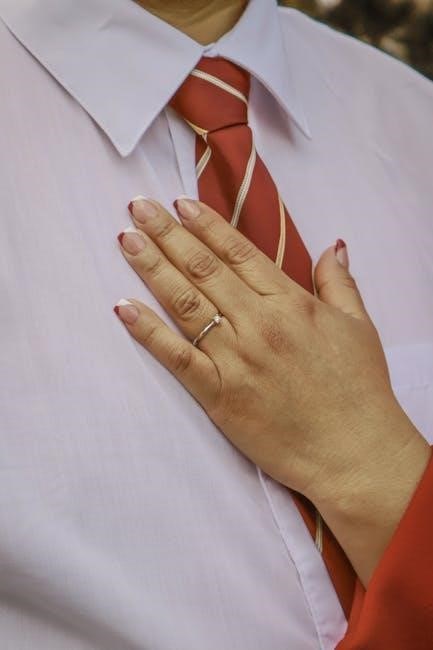
Common Mistakes to Avoid
Common mistakes include washing tie-dye too soon, using hot water, and not allowing enough time for dye fixation, which can lead to fading and damage.
11;1 Washing Too Soon
Washing your tie-dye garment too soon after the dyeing process is a common mistake that can lead to faded colors and a less vibrant design. Allowing the dye to set properly is crucial for the longevity of the pattern. If you wash the fabric before the dye has fully fixed, the colors may bleed excessively or lose their intensity. This can result in a dull, uneven appearance that undermines the effort put into creating the tie-dye design.
To avoid this, wait at least 6 to 24 hours before washing, depending on the dye used. This ensures the colors are fully set and less likely to fade during the first wash. Always check the dye instructions for specific timing recommendations.
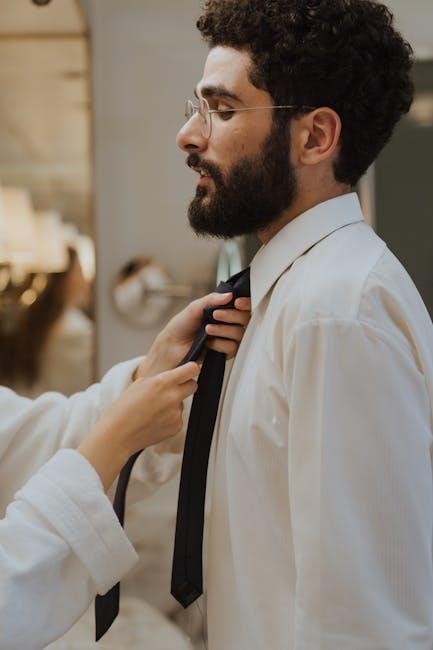
11.2 Using Hot Water Incorrectly
Using hot water when washing or rinsing tie-dye garments can lead to color fading and bleeding. Hot water causes the dye molecules to move more rapidly, which can weaken the bond between the dye and the fabric. This results in vibrant colors dulling quickly and potentially staining other clothes in the wash. While hot water may seem like a good idea for removing excess dye, it can actually harm the overall appearance of the design.
To preserve the colors, use cold or warm water for all washing and rinsing steps. If hot water is necessary, ensure it’s only used for heavily soiled areas and not for the entire garment. Always check the dye instructions for specific temperature recommendations to maintain the integrity of your tie-dye design.
11.3 Not Allowing Enough Time for Dye Fixation
One of the most common mistakes in tie-dye aftercare is not allowing enough time for the dye to fix properly. Dye fixation is the process where the color bonds with the fabric, and rushing this step can lead to poor color retention and uneven results. If the dye is washed out too soon, the colors may bleed or fade prematurely, undermining the vibrant design. Allowing the dye to sit for the recommended time ensures a strong bond between the dye and fabric.
Always follow the instructions provided with your dye kit, as fixation times can vary. Typically, 6-8 hours is ideal, but some dyes may require longer. Patience is key to achieving long-lasting, professional-looking results.